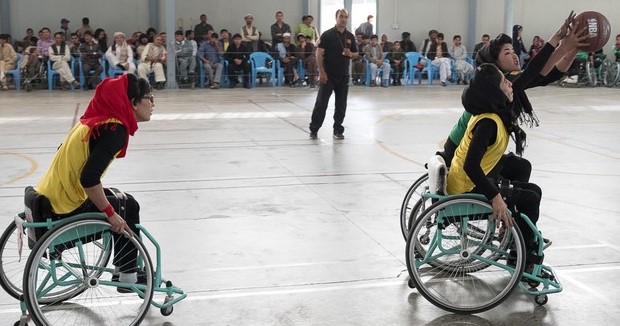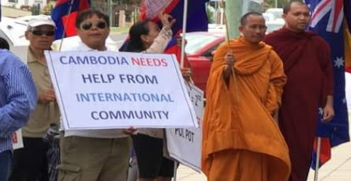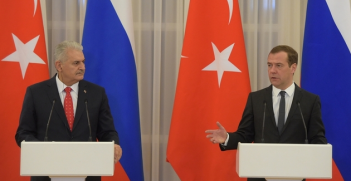Explosive Toll of Remnants of War

Anti-personnel landmines and other explosive remnants of war continue to endanger civilian populations around the world long after the conflicts have moved on. Impressive international action has been taken by both state and non-state actors to manage and remove the threats but the International Committee of the Red Cross says worldwide adoption of the international legal framework for the clearance of unexploded and abandoned ordances is still required.
International action to address the scourge of landmines, cluster munitions and other explosive remnants of war (ERW) has been impressive. In the last two decades, the production and transfer of new landmines has almost ceased and the number of people maimed or killed by anti-personnel landmines has dropped from around 20,000 a year to 3,500. Annually since 2010, areas around the world have been cleared of approximately 50,000 unexploded submunitions. However, this is not the time to become complacent.
ERW continue to threaten the lives of thousands of people. These weapons lie in wait for days, months, even years and decades after they have been planted or fallen. They remain in place despite ceasefires or peace agreements. They are sleeping weapons that lash out with destructive force the moment they are awakened. And they do not discriminate between soldiers and children, students and parents, farmers and livestock. More than 50,000 people have been killed or maimed by these weapons in the past decade with civilians accounting for the overwhelming majority. They can also hinder the reconstruction of homes, hospitals, schools and farmland.
It is almost 20 years since the 1997 Anti-Personnel Mine Ban Convention (APMBC) banned the use, production, stockpiling and transfer of landmines and obliged states to clear mines and assist victims. At the 2014 Maputo Review Conference on a Mine-Free World, organisers noted with satisfaction that the number of countries adhering to the convention had reached more than 160. The 2008 Convention on Cluster Munitions contains similar prohibitions for cluster munitions and 119 states have joined.
Noting the humanitarian consequences of ERW other than landmines and cluster munitions—such as grenades, rockets and mortar shells—the International Committee of the Red Cross (ICRC) encouraged states to adopt a separate agreement on ERW. This call to action resulted in the adoption of the Protocol on Explosive Remnants of War in 2003, which requires the 87 signatories to clear ERW as well as provide assistance to others in clearing ERW, record information on the use of ERW to facilitate subsequent clearance, protect civilians from the effects of ERW, and contribute to the rehabilitation and social reintegration of ERW victims. The protocol is a significant development and provides an important framework to facilitate a rapid response where ERW remain.
Australia is a party to the APMBC, Cluster Munition Convention and the ERW protocol. Many Pacific islands remain contaminated by ERW, primarily from World War II, and the Australian Defence Force deploys annually on the mine-clearing operation Render Safe around the region. Even armed non-state actors have contributed to the global humanitarian norm against the use of anti-personnel mines—Geneva Call’s Deed of Commitment banning anti-personnel mines has 49 armed non-state signatories. But there is still a long way to go to achieve the complete implementation and universal ratification essential to the success of these instruments.
In countries like Laos, Chile, Tajikistan and Chad, the period of conflict has ended but there is no respite from death, disability and disfigurement from old landmines lying under the earth or unexploded weapons that look like toys. And in recent and ongoing conflicts such as in Ukraine and Iraq, ERW pose grave threats to the civilian population. But even in countries that have been cleared of mines—like Nicaragua and Mozambique—the impact on landmine survivors and their families continues. People disabled by mines and ERW may be unable to access medical care, complete schooling, remain employed, support their families or be accepted as a contributing member of society. States are obliged to provide assistance to victims of ERW but not all have the necessary resources to provide the extensive medical, psychosocial, financial and vocational support that is needed.
In its work in conflict-affected areas around the world, the ICRC witnesses the humanitarian consequences of mines and ERW. In order to highlight the serious ongoing impact of landmines and ERW, the ICRC commissioned Getty Images photographers to document individuals and communities in Bosnia and Herzegovina, Iraq, Laos, Mozambique and Nicaragua. A selection of these images form the striking exhibition From Seeds of Destruction to Fields of Recovery, which will be displayed in Canberra along with a number of photographs from Afghanistan.
The photographic portraits capture the anguish and the strength of those who have survived mine and ERW explosions, such as children who were injured in accidents that killed siblings and friends. A man in Laos stands proudly on his handmade prosthetic leg, a farmer in Mozambique tends to his crops balancing on one leg, and two Iraqi sisters with only two legs between them learn to walk again together. In Afghanistan, men and women with disabilities train and compete in sports such as soccer and wheelchair basketball.
The exhibition also illustrates the dedicated work of individuals who risk their lives to clear mines and ERW enabling communities to return safely to their homes and farms. Mine clearance is expensive, time-consuming, painstaking and dangerous work but resolute action has made land safe for people and their livelihoods. Another important prevention activity is mine-awareness education, which enables civilians to recognise ERW and the danger that they pose.
There is now a complete international legal framework for the clearance of unexploded and abandoned ordnances that remain after a conflict is over and for providing victims with assistance. The ICRC encourages all states to fully implement their responsibilities in clearing mines and ERW and providing those affected with adequate services. Moreover, the ICRC calls for complete universalisation of the APMBC, the cluster munitions convention and the ERW protocol. Following the clearance of all landmines in Mozambique, a man who lost his leg to a mine said, “I am happy that nobody else will end up like me.” One day this sentiment might apply globally.
From Seeds of Destruction to Fields of Recovery is open to the public at the Hedley Bull Centre atrium at the Australian National University, Canberra, from 19 August -14 September 2016, 9am-5pm Monday to Friday.
Natalya Wells is policy and political affairs officer at the International Committee of the Red Cross Australia Mission. The article is published under a Creative Commons Licence and may be republished with permission.





